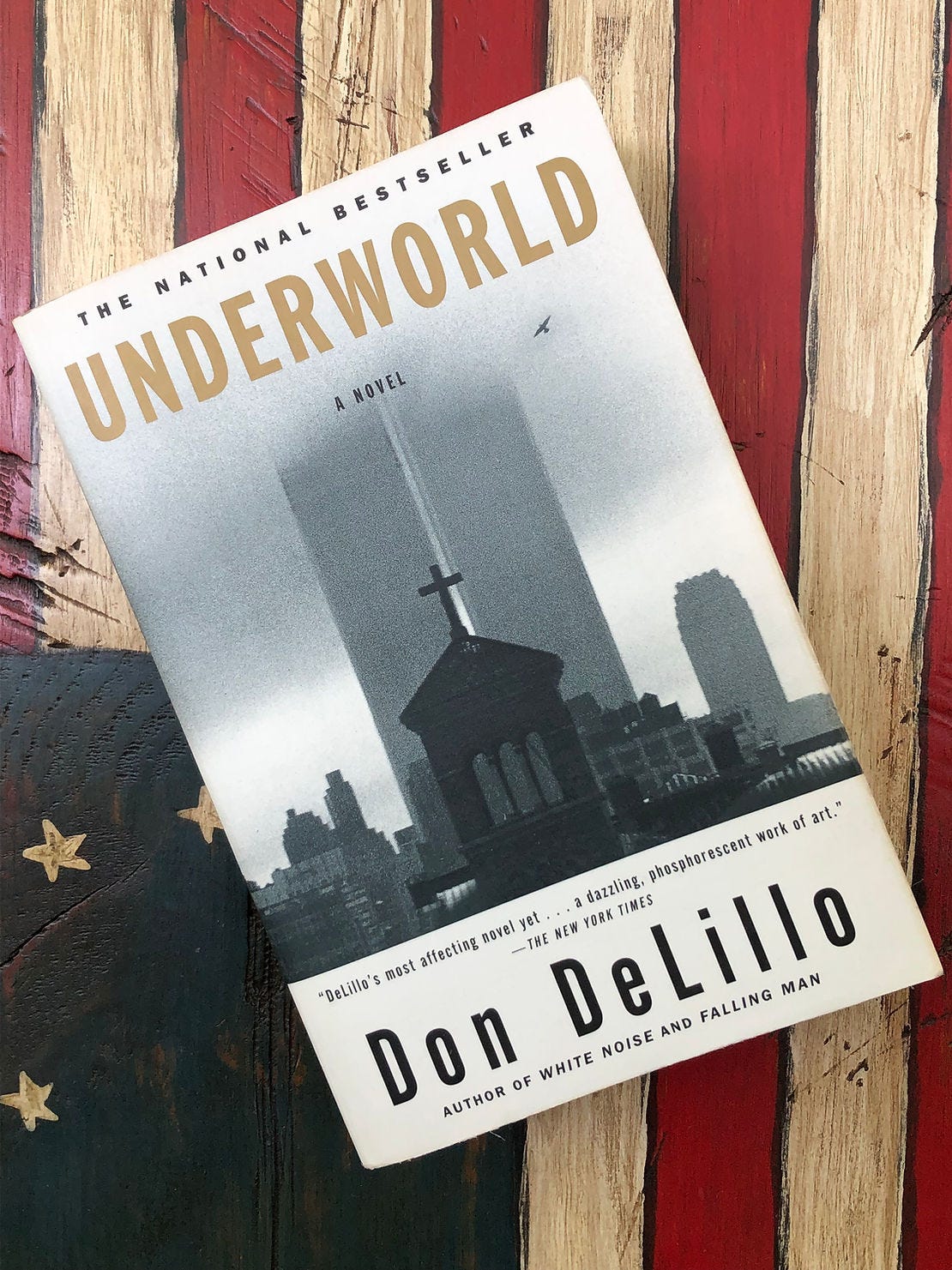Why Read - Under the Cover
Don DeLillo’s Underworld is 827 pages. That stops most people. It stopped me – twice. The only thing more arresting than its staggering length is its famous cover. The cover is the stuff of … well, his novel. I have attached it to this write-up but I must comment. The cover is very much responsible for my buying it almost twenty years ago and then failing after the first 200 pages and, most recently, pulling it off the shelf for another effort that got me to page 536. It is an Andre Kertesz black & white photograph of the Twin Towers capped in fog telescoped as background to an apparent medieval burial crypt topped by a cross. It might be shot from a cemetery in Brooklyn that has a view of Manhattan. I am not sure. To the right of the towers is a large bird that resembles a tiny plane. The novel is about the decline of the idea of America. Again … it was published in 1997 with this photograph. It is a haunting coincidence; one that often only the most ambitious art accidently embraces.
I failed when I put it down for the second time. In 2006 it was voted by a selection of authors as the second greatest American novel of the past 25 years behind Toni Morrison’s Beloved – equally challenging in every respect but length. I read the first set of reviews 22 years ago. I bought the paperback and after reading the first chapter set in the Polo Grounds on the day of Bobby Thompson’s “shot heard round the world”, I felt like a movie junkie shot through with the thrill of a great trailer. Alas, I didn’t get far. I told everybody about that first chapter, however. It still might be my favorite 60 pages in literature. Albeit, I am biased. It is about baseball and possibly the most famous game and hit in the sport’s long history. It matches the New York Giants and the Brooklyn Dodgers in a moment where San Francisco and Los Angeles were but a glimmer in the most prescient of minds. Throw in Frank Sinatra, J. Edgar Hoover and Willie Mays and the beginning of the long (very long) list of characters that string this novel together like an endless set of Christmas lights, and you have the stuff of a great literary lift-off.
Though it took longer the second time, that lift-off never got me launched. I returned to the book because of my mentor, my second father, John L’Heureux. Last month, I was thumbing through a heavily annotated copy of Conversation with John L’Heureux by Dikran Karaueuzian selecting passages that might be used on posters at his memorial service. While doing so, I stumbled upon his laudatory comments about Underworld. John believed that it was an extraordinary effort at capturing ordinary life in a declining America. He also could not get over the cover calling it prophetic. That was enough. 536 pages later, I accept defeat. In the end, I agreed with John’s favorite book critic, James Wood. In fact, it was from in a book of essays by Wood that John gave me the last time I saw him that I read a review that perfectly captured my frustration. Wood, quite reluctantly, refuses to crown Underworld with greatness. He suggests that the book simply tries too hard. It is too self-conscious of what it wants to achieve. Fiction, for Wood, “exists most effectively when it is unspoken.” That was enough for me. DeLillo’s had, in fact, worn me out.
So why did I write this? I hate to resort to a list but it feels appropriate. Firstly, I still insist that every serious reader must read the first 60 pages. It is America as she prepares to grope through yet another world war, her weary greatness arrested for a moment by a baseball game in her most fabled city. Secondly, there are pages, paragraphs and passages of pure lyrical joy. The man can write. Finally, I might be wrong. It might outlive me. I hope it does.
Underworld
by Don DeLillo
827 pages
1997


